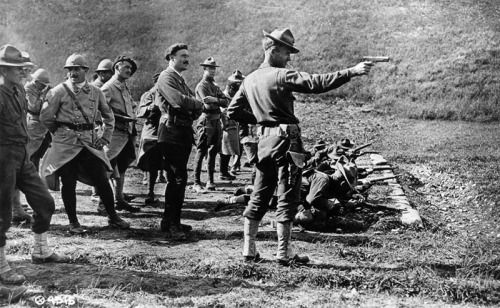
Back to the trenches! When I set out to seek out the sidearms of World War I, I never knew how deep I had to dive. There were tons and tons of sidearms fielded by the various military forces. I reduced it to the major powers of World War I and then had to split the articles in half to separate revolvers from automatics. We covered revolvers, and now it’s time to talk about the automatic handguns of World War I.
World War I was the first major war where automatic handguns became a common sight. The war started in 1914 after an assassin killed the Archduke and his wife with a semi-auto FN M1910 .380 ACP pistol, so maybe it was only appropriate that automatic pistols would be so relevant. In 1914, we were only a decade and a half from the first semi-auto pistol with a reciprocating slide, and as a whole, we were still figuring out which semi-auto handgun operating system would become the standard.

This led to a ton of interesting and fascinating pistols occupying the trenches of World War I. Today, we are going to take a look at the automatic handguns of World War I and break them down by the major powers of the Great War. With that in mind, we are going to focus on the weapons issued by the respective military forces. There were a ton of guns privately purchased and wielded, but it’s a bit tough to track those down.
Austria-Hungary – Frommer Stop and Dreyse M1907
The Austrian-Hungarian Empire used a wide variety of automatic handguns, but the two most common were the Frommer Stop and Dreyse M1907. Both of these were rather simple pistols, and both chambered the .32 ACP cartridge. They were straight blowback pistols with single-stack magazines.
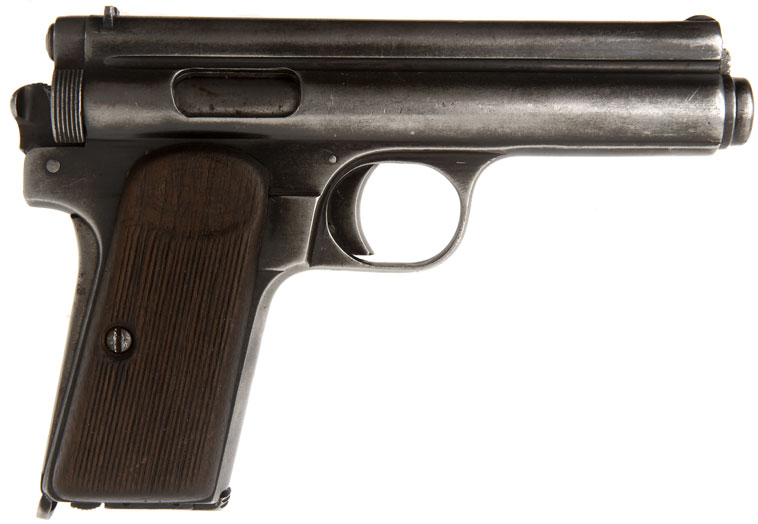
The Dreyse M1907 was an ugly but robust pistol. It was popular enough to last well into World War II. The gun was a striker-fired weapon with a seven-round magazine. One unusual feature was the fact the recoil spring is concentric and around the barrel.
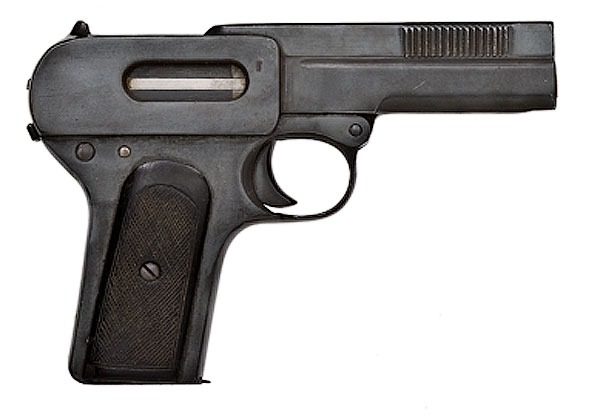
The Frommer Stop pistol is an unusual design that lacks a traditional slide. Everything is internal to the gun, including its moving parts, which come out of the rear when it’s fired. In the quest for small, rapid-fire weapons, they converted Frommer Stop pistols to machine pistols, fitted them with 25-round magazines, and mounted them upside down on a tripod.
Germany – Mauser C96 and Luger Series
The Germans were quick to adopt semi-auto pistols and came to World War I with the previously mentioned Frommer Stop and Dreyse M1907 pistols, but also their own 9mm handguns. The most famous and common is the Luger pistol. This gun was a toggle-locked, short recoil pistol that chambered the 9mm Parabellum cartridge when used by the German army. The Germans would adopt the Luger LP08 as something of a light rifle with a longer barrel, stock, and drum magazine.
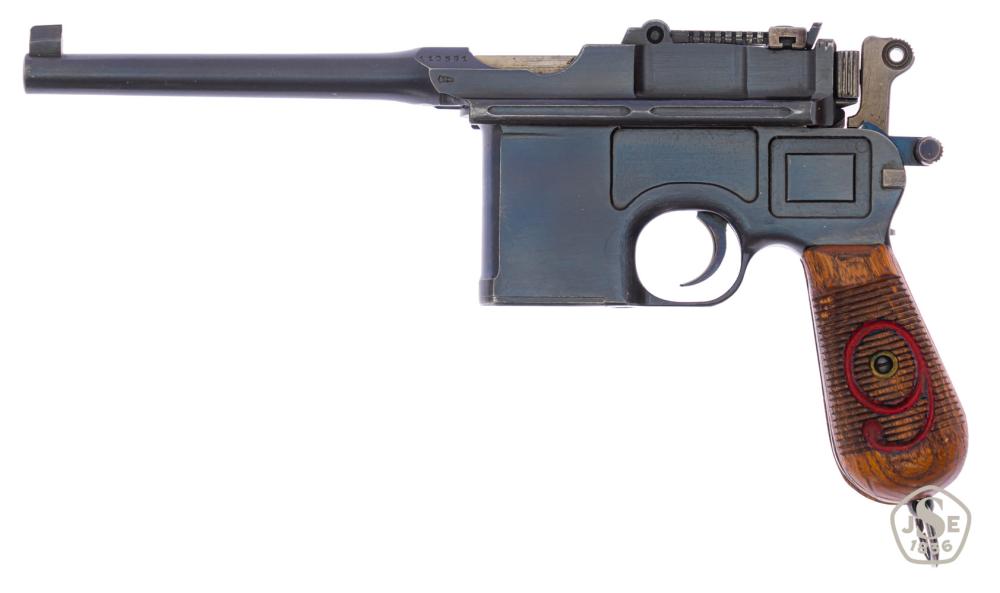
Another somewhat popular pistol with the German army was the Mauser C96. This was one of the earliest automatic handguns and one of the most widely produced. The Luger was slow to produce, so the German military ordered 150,000 C96 pistols in 9mm. These became known as the Red 9 Mausers.
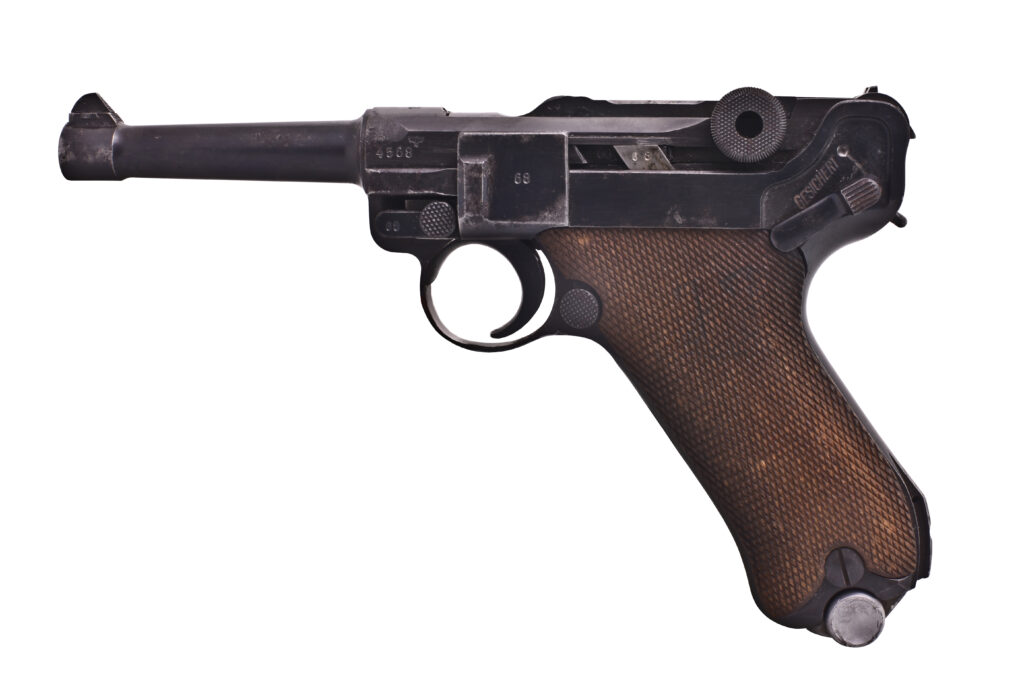
Turkey – Mauser C96, Luger Series, and Frommer Stop
The Ottoman Empire had a smattering of automatic handguns. Their allies used the Luger and Frommer Stop pistols, so it made sense for the Ottomans to purchase them or for their allies to provide them. The Mauser C96 had long been a part of the Turkish arsenal. In fact, they were the first military contract Mauser received for the C96.

The Turkish C96 guns were intended for palace guards, and only 1,000 were ordered. They chambered the Mauser 7.63 cartridge and, during World War I, made their way to the troops on the ground.
United States – Colt M1911 and Colt M1903
The untied States came with the high-tech at the time Colt M1911. This .45 ACP pistol used the new short recoil action to deliver lower recoil and high reliability. Unlike blowback-operated pistols, the M1911 could fire the powerful .45 ACP cartridge. World War I played home to a ton of automatic handguns, but only the M1911 remains a viable choice for modern shooters. People like to talk about stopping power, but staying power should be a consideration as well.

Alongside the M1911 were plenty of revolvers, as well as the Colt M1903. This pistol was issued to folks who were less likely to find themselves in a small arms fight. This included sailors of the US Navy and, eventually, pilots flying over the battlefield. This freed up M1911s for the guys on the ground and in the trenches.
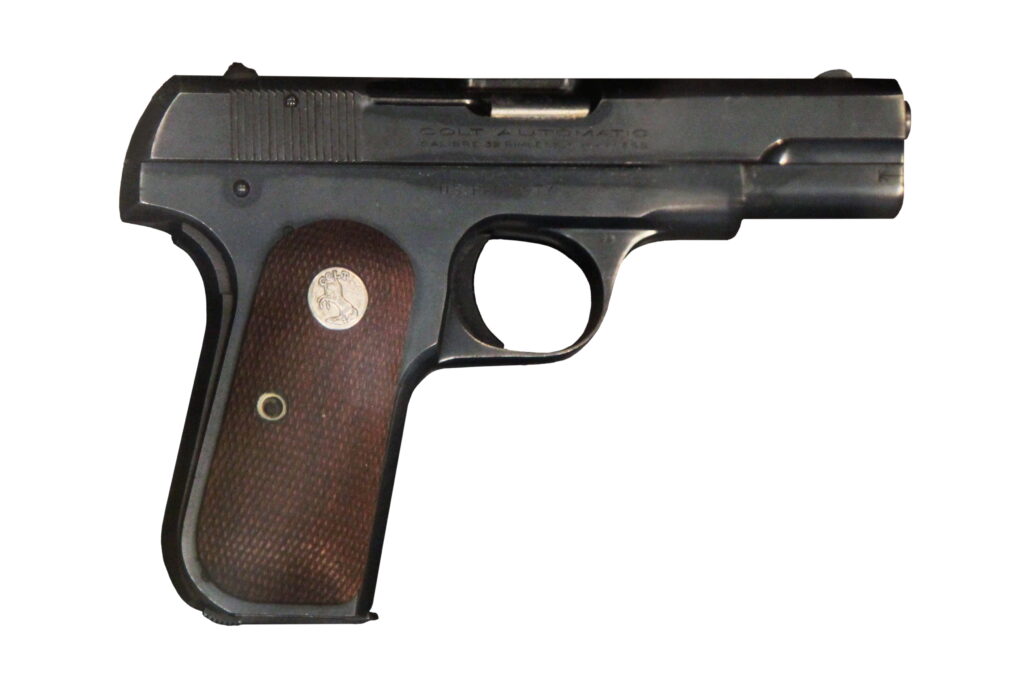
France – FN M1900, Ruby pistol, and Savage M1907
The French were fairly entrenched with their revolvers during the war, but a few automatic handguns made their way to French hands. The French had a big hankering for weapons, so it’s no surprise designs from Belgium, Spain, and America made their way into French hands.

The Frogs made good use of the FN M1900, an automatic handgun with a slide, in the hands of their Trench Raiders. These soft-recoiling, fast-firing, straight blowback pistols used the .32 ACP cartridge and were renowned for their reliability. Remember, automatics were new, so a reliable model was valuable.
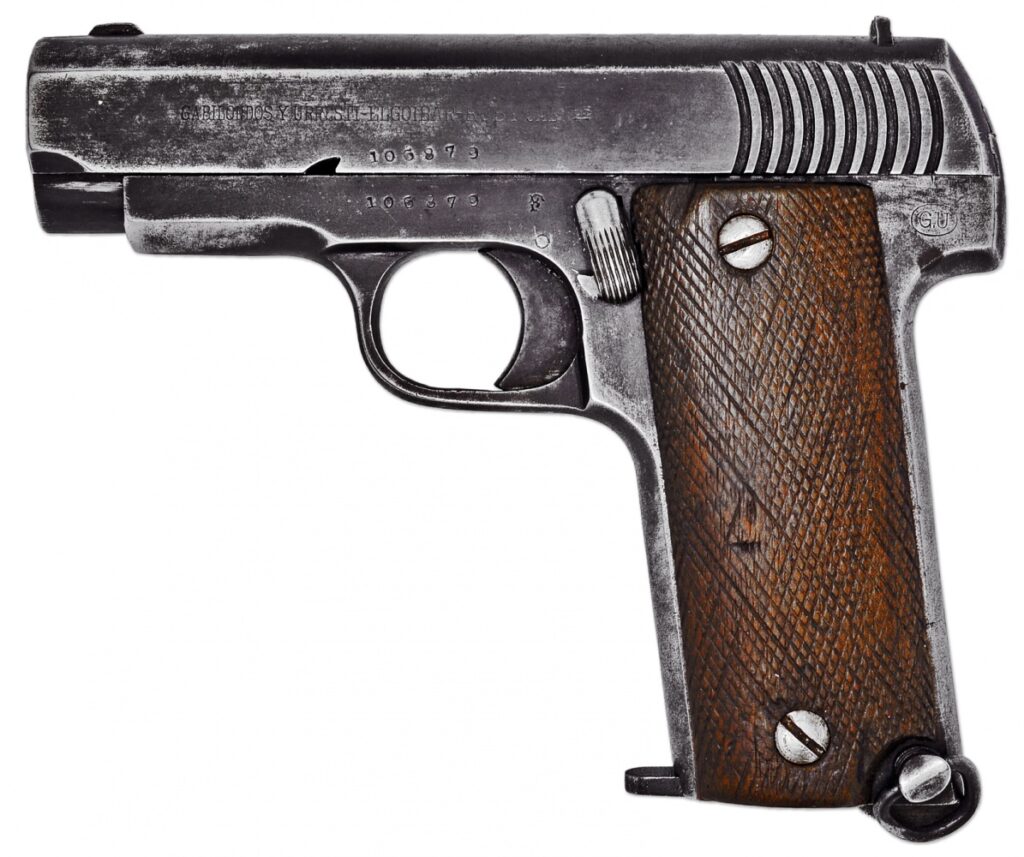
The Ruby pistol was a Spanish design that was loosely based on the Colt M1903. It’s a blowback-operated .32 ACP that was known for its durability and stout nature. The French must have appreciated the nine-round magazine because they purchased anywhere from 250,000 to 300,000 Ruby pistols.
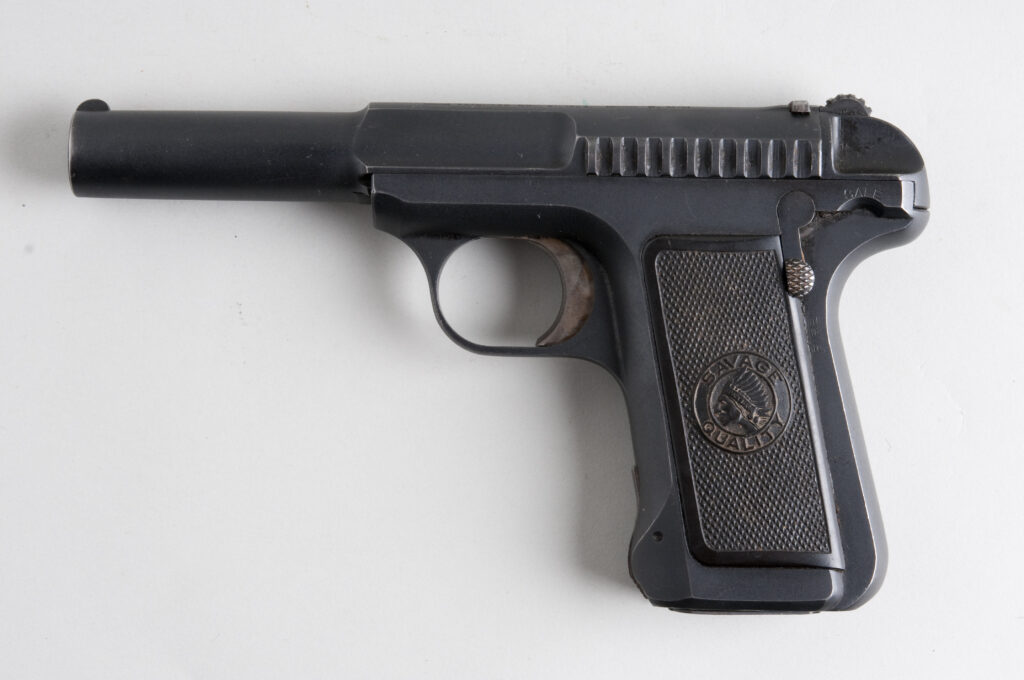
Finally, the Savage M1907, another .32 ACP pistol, was adopted in large numbers by the French. These military Savage automatics featured loaded chamber indicators and lanyard loops. These guns were quite impressive for the era and were very compact. They held ten rounds in one of the earliest examples of a double-stack magazine.
United Kingdom – Colt M1903, Colt M1911, and Webley Self-Loading pistol
The British loved their revolvers but must have seen the writing on the wall and gathered an array of automatic handguns to arm their troops with. While they would continue to issue revolvers into World War II, the First World War gave the Brits the miracle of Colt. The Colt M1903 in .32 ACP and .380 ACP was purchased in two batches during the war. These small automatics were quite reliable and easy to handle. They were reportedly mainly issued to the Royal Air Force.
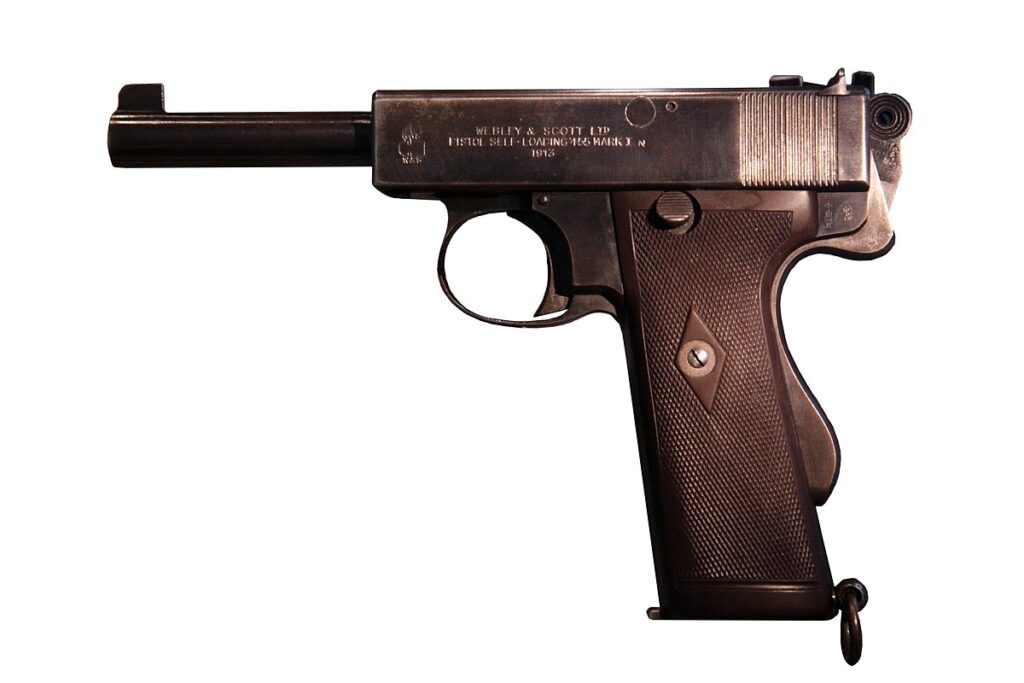
The Brits also got the M1911, which is nuts, considering that America couldn’t produce enough of them. The British M1911 chambered the .455 Webley Automatic cartridge, and these guns were sent to the Royal Navy. They are stock standard M1911s and were high-tech for the time. Still, they were a stop-gap to get guns in British hands.
Finally, the British Webley Self-Loading Pistol was also issued in .455 Webley to the Royal Navy, as well as the Royal Horse Artillery and Royal Flying Corps. The Webley Self-Loading Pistol was a fairly modern short-recoil design. However, the pistol did face some reliability issues.
Russian Empire – Colt M1911, FN Model 1903
The Russians were revolver guys for decades, and the Nagant revolvers were their main go-to. However, as the war cranked up, the Russians began to get their hands on whatever they could. Russia contracted with Colt to purchase 51,000 pistols between 1916 and 1917. These were standard Colt M1911s in .45 ACP.
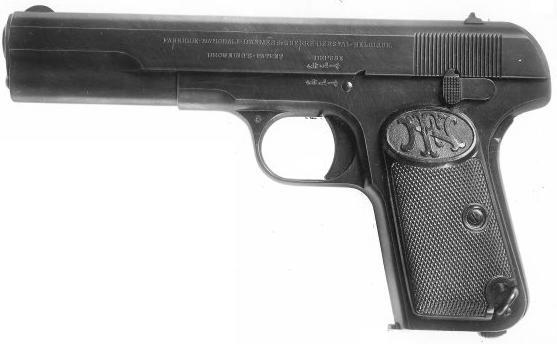
The Russians also used the FN Model 1903. It’s a Browning design, but it was not a Colt M1903 for the European market. This was a full-sized firearm chambering the 9x20mmSR Browning cartridge. This was a blowback pistol, and at the time, this specific cartridge was the most powerful cartridge a blowback weapon could safely fire. These guns are marked with crossed Mosin Nagant and were awarded to officers at the Imperial Nicholas Military Academy.
Automatic Handguns in World War I
World War I was in no way the first war to see automatic handguns shine. However, it was a massive and horrendous war, and it likely helped inspire and influence the small arms decisions of military forces across the world.



